Potřebujeme váš souhlas k využití jednotlivých dat, aby se vám mimo jiné mohly ukazovat informace týkající se vašich zájmů. Souhlas udělíte kliknutím na tlačítko „OK“.
ASTM D854-14
Standard Test Methods for Specific Gravity of Soil Solids by Water Pycnometer (Withdrawn 2023)
Automaticky přeložený název:
Standardní Zkušební metody pro měrné hmotnosti těles půdy vodou pyknometru
NORMA vydána dne 1.5.2014
Informace o normě:
Označení normy: ASTM D854-14
Poznámka: NEPLATNÁ
Datum vydání normy: 1.5.2014
Kód zboží: NS-39486
Počet stran: 8
Přibližná hmotnost: 24 g (0.05 liber)
Země: Americká technická norma
Kategorie: Technické normy ASTM
Kategorie - podobné normy:
Zemní práce. Hloubicí práce. Budování základů. Podzemní práce
Anotace textu normy ASTM D854-14 :
Keywords:
ICS Number Code 93.020 (Earth works. Excavations. Foundation construction. Underground works)
Doplňující informace
| Significance and Use | ||||||||||||||||||||||
|
4.1 The specific gravity of a soil solids is used in calculating the phase relationships of soils, such as void ratio and degree of saturation. 4.1.1 The specific gravity of soil solids is used to calculate the density of the soil solids. This is done by multiplying its specific gravity by the density of water (at proper temperature). 4.2 The term soil solids is typically assumed to mean naturally occurring mineral particles or soil like particles that are not readily soluble in water. Therefore, the specific gravity of soil solids containing extraneous matter, such as cement, lime, and the like, water-soluble matter, such as sodium chloride, and soils containing matter with a specific gravity less than one, typically require special treatment (see Note 1) or a qualified definition of their specific gravity. 4.3 The balances, pycnometer sizes, and specimen masses are established to obtain test results with three significant digits. 1.1 These test methods cover the
determination of the specific gravity of soil solids that pass the
4.75-mm (No. 4) sieve, by means of a water pycnometer. When the
soil contains particles larger than the 4.75-mm sieve, Test Method
C127 shall be used for the soil solids retained on the 4.75-mm
sieve and these test methods shall be used for the soil solids
passing the 4.75-mm sieve.
1.1.1 Soil solids for these test methods do not include solids which can be altered by these methods, contaminated with a substance that prohibits the use of these methods, or are highly organic soil solids, such as fibrous matter which floats in water. 1.2 Two methods for performing the
specific gravity are provided. The method to be used shall be
specified by the requesting authority, except when testing the
types of soils listed in 1.2.1
1.2.1 Method A—Procedure for Moist Specimens, described in 9.2. This procedure is the preferred method. For organic soils; highly plastic, fine grained soils; tropical soils; and soils containing halloysite, Method A shall be used. 1.2.2 Method B—Procedure for Oven-Dry Specimens, described in 9.3. 1.3 All observed and calculated values shall conform to the guidelines for significant digits and rounding established in Practice D6026. 1.3.1 The procedures used to specify how data are collected/recorded and calculated in this standard are regarded as the industry standard. In addition, they are representative of the significant digits that generally should be retained. The procedures used do not consider material variation, purpose for obtaining the data, special purpose studies, or any considerations for the user's objectives; and it is common practice to increase or reduce significant digits of reported data to be commensurate with these considerations. It is beyond the scope of these test methods to consider significant digits used in analysis methods for engineering design. 1.4 The values stated in SI units are to be regarded as standard. The inch-pound units given in parentheses are mathematical conversions which are provided for information purposes only and are not considered standard. 1.5 This standard does not purport to address all of the safety concerns, if any, associated with its use. It is the responsibility of the user of this standard to establish appropriate safety and health practices and determine the applicability of regulatory limitations prior to use. |
||||||||||||||||||||||
| 2. Referenced Documents | ||||||||||||||||||||||
|
Podobné normy:
Historická
1.8.2012
Historická
15.1.2010
Historická
1.7.2008
Historická
1.7.2008
Historická
1.7.2008
Historická
15.9.2008
Odebírejte informace o nově vydaných normách ZDARMA:
Chcete pravidelně odebírat informace o nově vycházejících normách z celého světa a to zcela zdarma?
Přihlašte se k odběru. Vše je velice jednoduché a absolutně ZDARMA.
Na výběr máte vydavatele z celého světa.


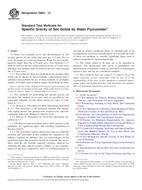
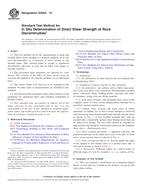 ASTM D4554-12
ASTM D4554-12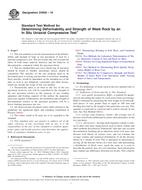 ASTM D4555-10
ASTM D4555-10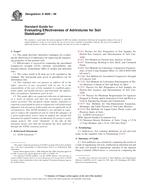 ASTM D4609-08
ASTM D4609-08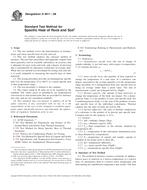 ASTM D4611-08
ASTM D4611-08 ASTM D4623-08
ASTM D4623-08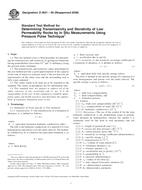 ASTM D4631-95(2008)..
ASTM D4631-95(2008)..
 Cookies
Cookies
